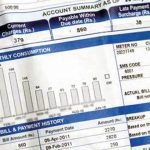Take your SSGC December gas bills out. Pay them. You are likely to be paying or have already paid a significantly higher amount. And that makes fair sense. Temperatures have dropped, you are using the “luxury” of geysers. More importantly, the tariffs have also increased considerably from last year. What is the fuss then? Tariff increase is at least half a year old.
BR Research has noticed some interesting and seemingly “not-so-innocent” instances of fishy-goings in the latest SSGC bills. Few examples of real cases will help. So there is a bill that is based on 201 units of gas. So what, you may ask. Too bad, if you end up on the wrong side of the slab. You could have instead used the precious resource more judiciously. Simple?
Well, not so simple. One would place it on sheer luck had the meter readings been based on the usual practice of 27-30 days. But when there are instances of readings based on 32 days, which surely becomes the basis of your slab falling in the higher category – then eyebrows will be raised. So what should have been Rs3500 for the gas bill, becomes Rs4600 – higher by 31 percent – for that additional unit – which is a result of your consumption being metered for more than a month.

Then there are instances of readings well within the 30 day period. For instance, a gas bill seen by BR Research based on 29 days of metering, according to the dates printed on the bill – falls 14 units short of making it to the 200 unit slab. One would rightly point out that had SSGC been playing a game of sorts, it could have surely waited another two to three days for the slab to change. Only that it did, but could not succeed.
A usual SSGC bill gives both the date of current reading and the number of days for bill calculation and computation of current gas charges. In this particular case, the date mentioned from the previous reading matches perfectly with the number of days mentioned in a separate column. Only that SSGC people did not think through the entire ploy. The bill also provides a snapshot of the actual meter reading. And that reading is clearly three days ahead of the date mentioned in the ‘current reading’ column – taking the actual reading to 32 days. Only that even that did not result in the slab changing in this particular case – is down to SSGC’s sheer hard luck.
In case you are wondering about the legality of a billing period going past 30 days, look no further than SSGC’s own Consumer Manual. The clause related to billing cycle clearly mentions “30 days of meter reading each month” and the definition of a ‘month’ also states “a period of time for Billing purpose of 30 consecutive days.” A response or two, or a refund or millions, would not hurt.







